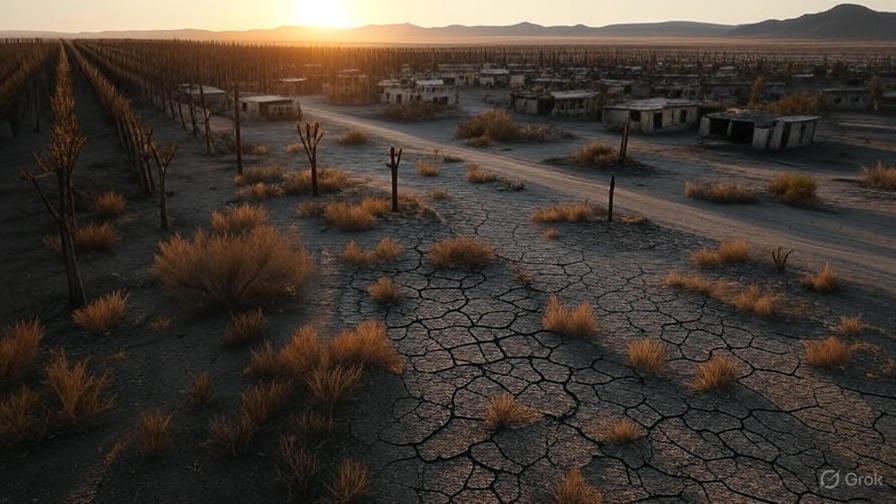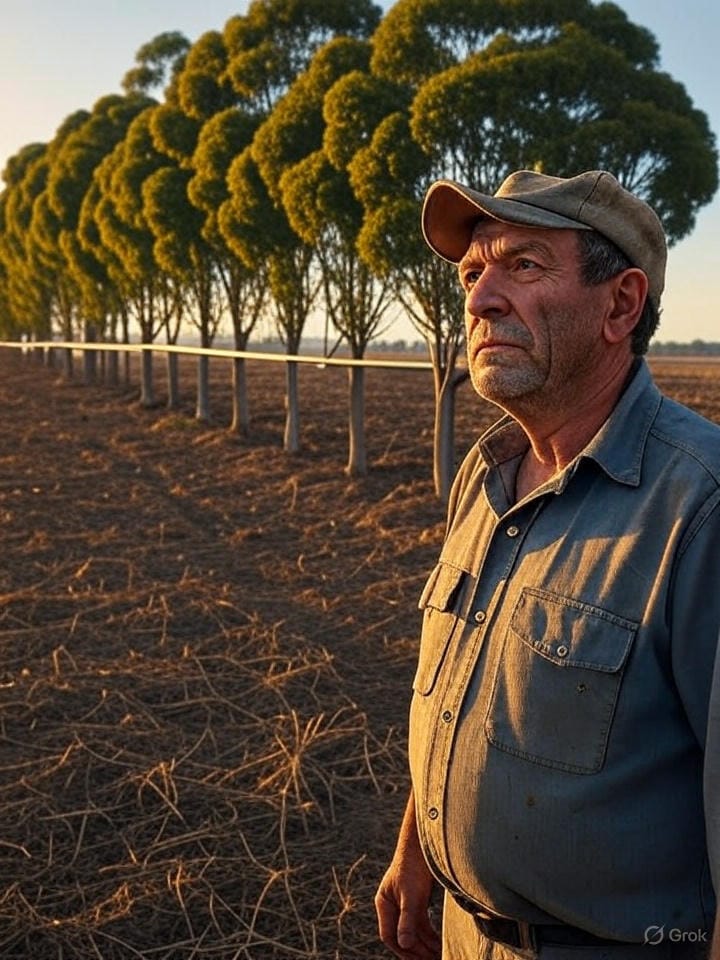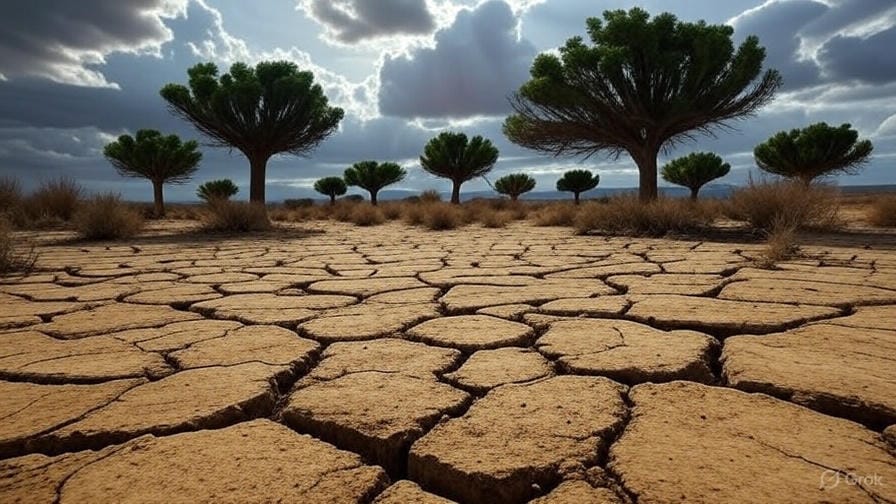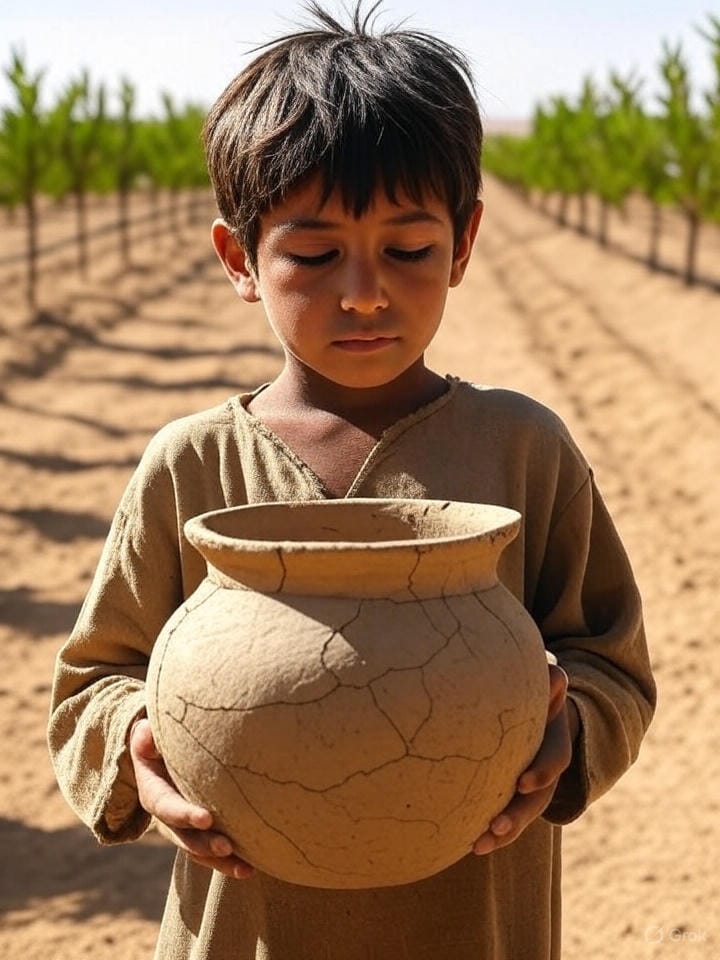
Table of Contents
ToggleAre desert tree planting harmful ?
Desert planting has been promoted as a bold solution to climate change and land degradation across the world. From international agencies to corporate investors many people see planting in arid landscapes as a way to capture carbon, restore ecosystems and create new opportunities for local residents. The idea sounds simple and hopeful : turn barren deserts into lush green spaces that benefit both, people and the planet.
Yet beneath this promise lies a more complicated reality. Desert ecosystems are fragile, and large-scale afforestation projects often rely on Deep groundwater extraction and fast growing non native trees. These choices may create greenery for short term but gradually it shows the Impact of desert planting. Instead of prosperity, communities face dried Wells, declining agriculture and forced migration.
What was intended as a climate solution can spark water conflicts, economic loss and social dislocation. Therefore, the story of desert greening is not only about trees and carbon credits it is also about the people whose lives are reshaped by these projects. This blog explores a wide range of Impact of desert planting in all spheres.

Impact of desert afforestation on people
Tree planting in desert is often celebrated globally but the people living closest to these projects experience harsh consequences. Their daily survival is tied directly to fragile water systems and land use patterns, which are frequently disrupted by large-scale afforestation projects. Here few impacts of desert planting on people :-
Water Insecurity
- Projects often rely on groundwater pumping to sustain trees in arid soils
- When the aquifers dry up then the Wells that once used to serve villagers eventually become unusable.
- Families, especially women and children, are forced to walk longer distances for drinking water.
Health struggles
- Water scarcity leads to poor sanitation and it can cause waterborne diseases
- Increased dust and land degradation from failed plantations make worst respiratory conditions
- When food products decline, then Malnutrition grows, which mostly affects children.
Livelihood pressures
- Farmers lose irrigation for crops because water is diverted for the trees
- Herders often face decrease in grazing lands which leads to increasing conflicts over access to pastures
- Many are forced to abandon farming and migrate to low-paying urban work
Unequal Burden on Vulnerable Groups
- Women spend more time fetching water which limits their education and income opportunities
- The elderly and disabled family members are hit hardest when families migrate since they are left behind
- Children lose stability in schooling as displacement becomes common.
In short, desert greening projects are portrayed as environmental victories but they also have negative costs on local people and sometimes desert tree planting fails. Many people have faced increased hardship, insecurity and forced adaptation to a rapidly changing environment.
Impact of desert afforestation on economy
Desert planting is often promoted as a path toward economic growth but the reality for many local populations is quite the opposite. Instead of improving livelihoods, these projects frequently deepen poverty and create new financial pressures.
One of the most significant problems is the diversion of water. That’s why shrubs dominate deserts. Irrigation that once supported crops is redirected to plantations of fast-growing trees, leaving farmers with failing harvests. Reducing crop yields cuts household income and also raises food prices in local markets, and all this results in more expensive survival. In pastoral communities grazing areas shrink as land is fenced off for plantations which forces herders to buy fodder or travel further away with their animals – but both are costly options.
Employment promises also rarely materialize. Many projects highlight job creation as a key benefit, but in practice, most jobs are temporary and low-paid. Local people are left without lasting skills or income sources, they get only little training or capacity building. Corporations and outside contractors secure long-term financial gains through carbon credits and international funding, which creates a wider gap b/w investors and affected communities.
Economic stress causes migration. Families are unable to sustain themselves in villages hence they move to urban areas in search of income sources. The loss of rural productivity combined with increasing urban poverty creates a double burden on national economies. In addition, the Government spends a large amount which subsidizes desert afforestation projects, and all this to see them collapse.
The long-term outcome is a cycle of economic vulnerability. Instead of building resilient rural economies, desert tree planting makes a weak foundation for local livelihoods. The promise of green growth transforms into financial hardships when projects ignore water reality and human need.

Social Impact of desert afforestation
Beyond individual struggles desert tree planting projects reshape entire community and their social fabric. What begins as an environmental intervention often brings profound changes in social life and cultural identity. The impact of desert planting in social terms is:-
Displacement and Migration
- Families migrate to nearby towns or cities as Wells become dry and farming collapses
- Villages that were once filled, get turned into ghost settlements with half-empty villages
- Migration disrupts family unity, Men move cities for work while women & children stay behind
Breakdown of Social Cohesion
Traditional water sharing agreements between households or clans collapse under scarcity. Sometimes conflicts may also arise between farming and herding groups for limited land and water. This allows actions to erode trust within villages as resources are privatized or captured by project authorities.
Many desert communities have cultural rituals that are tied to land, Wells, and farming cycles. When these fertile traditions disappear, these traditions vanish. Youth lose connection to ancestral practices which creates generational gaps.
As we have discussed, men go for water and fuel, due to which women face an increased workload. Girls often drop out of school to help with household survival tasks. Men may gain temporary jobs from planting projects, but women remain excluded from decision-making.
The educational impact of desert planting is that children miss school during water collection trips or after displacement. Migrant families struggle to re-enroll children in urban schools. A cycle of poverty becomes deeper because education becomes unstable.
Erosion of community governance is also an impact of desert planting. External corporations or NGOs often control project planning, and due to this, local voices are sidelined, which leaves communities powerless in decisions about their own land.
So in many cases desert tree planting divides rather than uniting communities. Social networks that were offered resilience against drought and hardship get weak which leaves people more vulnerable. Instead of building stronger societies, these projects tear apart the communities that they were claiming to protect.

Impact of desert afforestation on the Environment
Tree planting in deserts is often imagined as an environmental success story but the ecological outcomes are far more complex. In many cases, afforestation in arid landscapes disrupts natural balances instead of restoring them. According to USGS – Groundwater Decline and Depletion, Excessive pumping of groundwater has caused water levels in thousands of wells to decline.
A key issue is water depletion. Non native fast growing species such as eucalyptus or acacia require more water than the desert can naturally supply. And that’s why groundwater is extracted to keep these trees alive, which results in aquifers’ decline and leaves less water for ecosystems and people. This creates a paradox where efforts to green the land eventually accelerate desertification.
Another consequence is the loss of biodiversity. Native desert shrubs and grasses, which are well adapted to arid climates, are often cleared to make space for plantations. This reduces habitats for local wildlife and eliminates plant species that have supported communities for centuries. Monoculture plantations reduce resilience against droughts and pests instead of strengthening ecosystems.
Soil health also suffers. Heavy irrigation and unsuitable tree species can lead to soil salinization, which makes land unproductive in the long run. Additionally, when these plantations fail, they leave behind degraded land due to a lack of water or poor management. Rather than helping desert to regenerate, the poorly planned tree planting often leaves damaged soils, lower biodiversity and fragile ecosystems which is dependent on artificial maintenance.
FAQs
What is the impact of desert planting on people living in arid regions?
The impact of desert planting on people can be severe because those projects often compete with the local community for scarce water resources. Families may face declining crop yields, food insecurity and forced migration when Wells dry up. The goal is to fight climate change but the immediate effect on people is hardship.
What are the impact of desert planting on local economy
Economic impacts are usually negative when afforestation in deserts is poorly planned. Farmers lose irrigation water, herders lose grazing land and promises jobs often turn out to be temporary. Despite this, corporations may benefit from carbon credits and exacerbate inequality between investors and local populations.
Are there environmental risks linked to desert tree planting projects?
Yes, planting non native trees in deserts can deplete groundwater, reduce biodiversity and lead to soil salinization. These changes cause weak, fragile desert ecosystems and sometimes leave the land more degraded than before the project started. Sustainable alternatives should focus on native vegetation.
